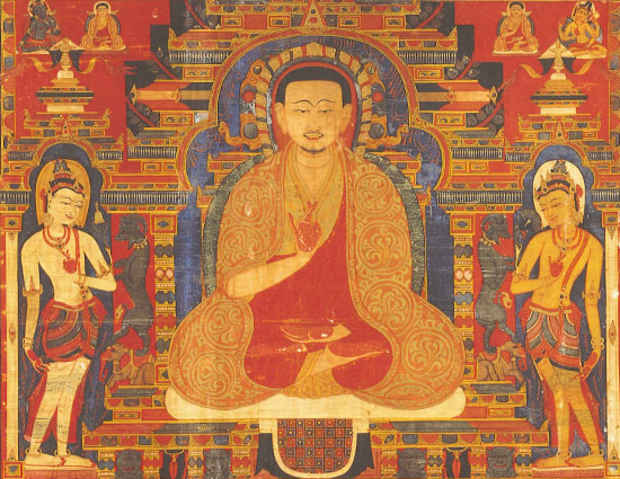"Mirror of the Buddha" Exhibition
Rubin Museum of Art

This event has ended.
The exhibition is the third in a series of eight exhibitions and catalogs by the foremost scholar of Tibetan Buddhist painting, David Jackson. Jackson’s current research focuses on the history of Tibetan painting as it can be reconstructed through inscriptions and representations of religious lineages from Tibetan primary
sources. Treating paintings as historical documents, Jackson offers an unprecedented methodological approach to studying Tibetan art. He has examined and contextualized these objects and woven them into a rich historical narrative that provides many insights into the culture and art of Tibet and, in this exhibition, identifies the major players in the development of the Tibetan Buddhist religious traditions -- teachers, monks, students, and patrons of historical teaching lineages.
The exhibition can be seen concurrently with Once Upon Many Times: Legends and Myths in Himalayan Art until January 30, an exhibition that presents the variety of forms that tell stories of the Buddha, great teachers, legendary masters and their spiritual quests, and adventures of heroes painted in thangkas, murals, and told in front of portable shrines.
What do such ancient paintings mean to us today? According to Donald Rubin, co-founder and co-chair of the board of the Rubin Museum, “When we look at the portraits of teachers presented in the exhibition, we feel that we know them because of the human features depicted -- balding heads, peculiar facial hair, or protruding teeth. They look like people we might have met just yesterday. And in feeling that connection, we receive the inspiration they offer us -- great saints all of them -- reaching across time and space.” Chief Curator Jan Van Alphen added, “David Jackson fully explores this notion of guru worship and its artistic outcomes, noting the conflicting tendencies present in such paintings—depicting the idealized saint and the recognizable human teacher at the same time.”
Mirror of the Buddha includes portraits of the founders and teachers in all of the Tibetan Buddhist schools. Six Tibetan Buddhist sects are represented in all, in rough chronological order. They begin with the Kadam School, followed by Taklung, Drigung Kagyu, Karma Kagyu, Sakya, and Geluk traditions. Within each school, the paintings are ordered chronologically. Grouping the art by religious tradition allows the visitor to observe broad pan-Tibetan stylistic developments. It also highlights a few cases of striking sectarian stylistic preferences.
Dating between roughly 1200 and 1550, the images chosen for presentation exemplify two classic Indic styles of Tibetan painting. Most are in the East-Indian inspired Sharri (“Pala”) style, characterized by classic Indian forms, delicate colors, and intricate decorative details. Though this style spread from India to many parts of Asia, it was emulated most faithfully by Tibetans, enjoying its highest popularity in Tibet from the twelfth to fourteenth century. A number of the later portraits are in the Nepalese-inspired Beri style, which succeeded the Sharri in Tibet in the mid-fourteenth century.
Media
Schedule
from October 21, 2011 to March 05, 2012